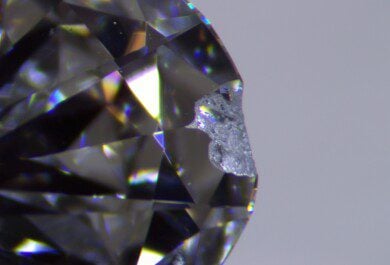Comparison of the contentious issue of cut grades was not possible, since GIA-GTL reports do not rate a diamonds proportion based cut quality. Under the heading ‘Proportions’ are depth percentage, which is the depth divided by average diameter and multiplied by 100, table size as a percentage of the average diameter, the girdle in descriptive wording and finally culet size description. A sub heading ‘Finish’ lists polish and symmetry. Both other labs give crown and pavilion information; AGSL gives both angle and percentage data and EGL USA gives crown height and depth percentages. GIA-GTL noted under comments any diamond with a crown angle greater than 35° or less than 30°.
The information provided by AGSL and EGL USA enables proportion grades to be checked with cut grading systems provided by the authors on cutadviser and
www.gemappraisers.com.
3.2.1 Proportion Grading
AGSL has an optional report system for round diamonds that grades a diamonds cut against a comparatively tight set of proportions. The top grade is ‘zero’ and the worst grade is 10. AGS 0 has become synonymous with the term ‘Ideal Cut’ in North America (stones # 5 to # 10).
EGL USA produce optional reports with proportion based cut grade results (e.g. stone # 7 is called EGL IDEAL PLUS).
Researchers in the field of cut studies debate the use of parameter ranges for cut grading round diamonds. It would be fair to say that all three labs (and most others) are un-satisfied with the parametric based approach. GIA[1] and AGS[2] now recognize that diamonds with the steepest crown and deepest pavilion, within a cut grade category, are not as attractive as many diamonds of lower grades, with combinations of shallow crown and deep pavilion, or steep crown and shallow pavilion. The same is true for shallowest crown and pavilion combinations. The GIA is conducting a costly decade long cut study to establish a cut grading system. This has taken longer than planned. At the 2004 Basel GemFest GIA released information indicating that its new cut grade system will account for the above mentioned relationship between crown and pavilion angles.
3.2.2 Symmetry and Polish
Symmetry and polish were graded for all stones by all three labs. The table below describes the terminology used by each lab.
| GIA-GTL |
AGSL |
EGL USA |
| Excellent |
Ideal |
Excellent |
| Very Good |
Very Good |
Very Good |
| Good |
Good |
Good |
| Fair |
Fair |
Fair |
| Poor |
Poor |
Poor |
Generally the Polish and Symmetry grades of GIA-GTL and AGSL coincide with each other for Excellent/Ideal and Very Good and Good grades. All three labs gave similar grades for diamonds rated as Good. However EGL USA reported mostly Good or Very Good Polish and Symmetry for diamonds that were graded Excellent / Ideal by GIA-GTL and AGSL respectively.
discuss
« Clarity and Color | Clarity Plots »
[1] GIA-GTL presentation at Basel GemFest April 2004
[2] AGSL presentation at the First International Diamond Cut Conference April 2004.











